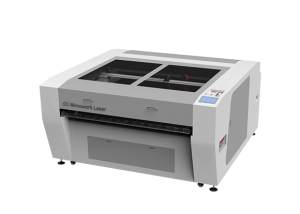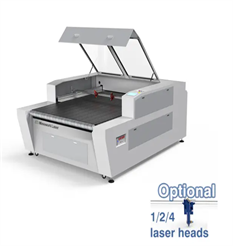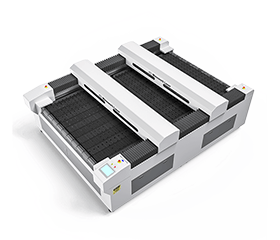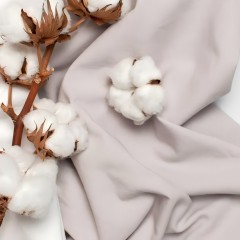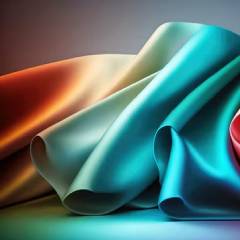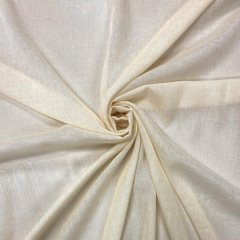Laser Cut Damask Fabric
"Did you know there's a fabric that has no wrong side?
Medieval nobles obsessed over it, modern designers worship it.
It’s just woven thread, yet plays light and shadow like magic…
Can you name this legendary double-agent of textiles?"
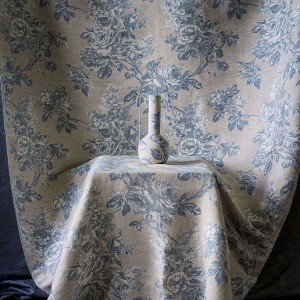
Damask Fabric
Introduction of Damask Fabric
Damask fabric is a luxurious woven textile renowned for its intricate patterns and elegant sheen. Characterized by its reversible design, damask fabrics feature raised motifs that create a striking contrast between matte and glossy surfaces. Traditionally crafted from silk, modern variations also utilize cotton, linen, or synthetic blends, making them versatile for both fashion and interior design.
1. Key Features of Damask Fabric
Reversible Weave: The patterns appear identical on both sides, with inverted color tones.
Durability: Tight weaving ensures long-lasting quality while maintaining a refined finish.
Luxurious Texture: The interplay of light and shadow enhances its sophisticated appeal.
Versatility: Used in high-end upholstery, drapery, table linens, and formal attire.
2. Why Lyocell?
The Original Smart Fabric
Damask isn't just beautiful - it's genius by design. This 6th-century innovation from Damascus solved problems modern designers still struggle with:
Created the first reversible decor (centuries before IKEA)
Developed built-in stain camouflage (just flip it!)
Mastered light manipulation before electricity (those candlelit castle parties needed ambiance)
Comparison with Other Fabrics
Damask vs. Others
| Fabric | Key Features | Strengths | Best Uses |
|---|---|---|---|
| Damask | Reversible jacquard, matte/satin contrast | Luxurious yet durable, stain-hiding | High-end decor, formalwear, drapery |
| Brocade | Raised embroidery, single-sided | Ornate heaviness, ceremonial grandeur | Traditional upholstery, wedding attire |
| Jacquard | All patterned weaves (includes damask) | Design versatility, cost-effective | Everyday fashion, bedding |
| Velvet | Plush pile, light-absorbing | Tactile opulence, warmth | Furniture, winter garments |
| Linen | Breathable texture, natural wrinkles | Casual elegance, coolness | Summer clothing, minimalist decor |
◼ Guide to the Best Laser Power for Cutting Fabrics
In this video
we can see that different laser cutting fabrics require different laser cutting powers and learn how to choose laser power for your material to achieve clean cuts and avoid scorch marks.
◼ How to automatically cut the fabric | Fabric Laser Cutting Machine
Come to the video to check out the automatic fabric laser cutting process. Supporting roll to roll laser cutting, the fabric laser cutter comes with high automation and high efficiency, helping you with mass production.
The extension table provides a collection area to smooth the whole production flow. Besides that, we have other working table sizes and laser head options to meet your different requirements.
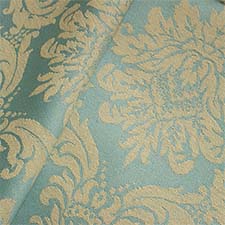
Material Selection
High-density damask (silk/cotton blend)
Pre-coated with hot-melt adhesive backing
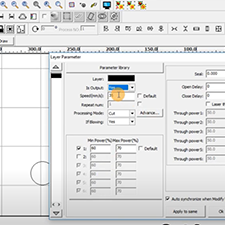
Cutting Parameters
Precision Cutting
Openwork Engraving
Nitrogen shielding to prevent scorching
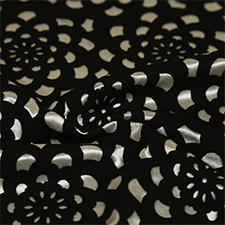
Key Advantages
0.1mm ultra-fine detailing
Automatic pattern recognition for jacquard alignment
Simultaneous edge sealing to prevent fraying
Laser Cut Damask Fabric Process
◼ Damask Fabric's FAQs
Damask fabric is a reversible, patterned textile known for its intricate designs and lustrous appearance. It is woven using a combination of satin and satin-weave techniques, creating contrasting matte and shiny areas that form elaborate patterns (like florals, geometric shapes, or scrollwork).
Damask can be made from cotton, linen, silk, wool, or synthetic fibers—it’s defined by its weaving technique, not the material itself. Historically, silk was most common, but today, cotton and linen damasks are widely used for their durability and natural appeal.
Yes, damask is generally considered high-quality fabric, but its durability and luxury depend on the fiber content, weave density, and manufacturing standards.
1. Look for the Signature Weave & Pattern
2. Check the Reversibility
3. Feel the Texture
4. Examine the Material
Damask has a subtle, elegant shine—but it's not glossy like satin or metallic like brocade.
Why Damask Looks Shiny (But Not Too Shiny)
Satin-Weave Sections:
The patterned areas use a satin weave (long floating threads), which reflects light for a soft luster.
The background uses a matte weave (like plain or twill), creating contrast.
Controlled Shine:
Unlike all-over shiny fabrics (e.g., satin), damask’s sheen is pattern-specific—only the designs gleam.
Silk damask is shinier; cotton/linen damask has a muted glow.
Luxurious but Refined:
Perfect for formal settings (e.g., tablecloths, evening wear) because it’s opulent without being flashy.
◼ Laser Cutting Machine
• Laser Power: 100W/150W/300W
• Working Area: 1600mm * 1000mm (62.9” * 39.3 ”)
• Laser Power: 100W/150W/300W
• Working Area: 1600mm * 1000mm (62.9” * 39.3 ”)


